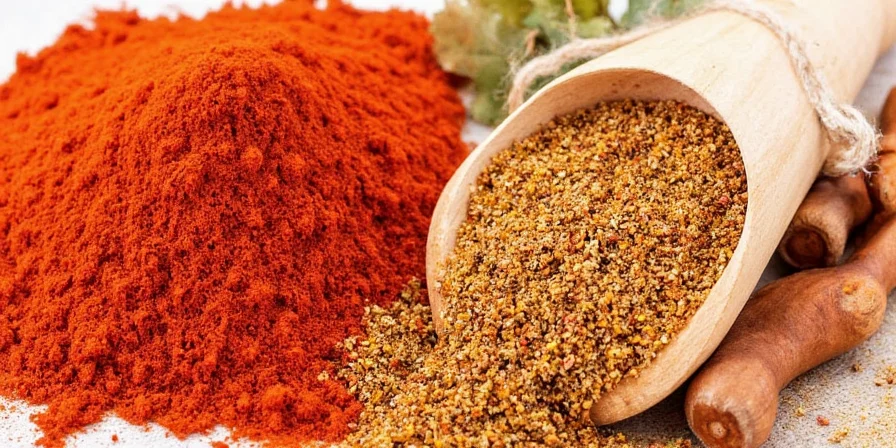Discover exactly how to use paprika like a pro chef with this practical guide. Paprika is ground from dried Capsicum annuum peppers and comes in sweet, smoked, and hot varieties - each with distinct culinary applications that can transform your cooking.

Unlike common misconceptions, paprika isn't just for color - its complex flavor profiles (from sweet to smoky to fiery) make it a versatile kitchen essential when used correctly. This guide reveals exactly which type to use for specific dishes and how to avoid common mistakes like bitterness.
What Is Paprika and Which Type Should You Use?
Paprika is a spice made from ground sweet or chili peppers that originated in Central America but became prominent in Hungarian and Spanish cuisine. The three main varieties differ significantly in flavor and culinary application:

| Variety | Flavor Profile | Best For |
|---|---|---|
| Sweet Hungarian | Mild, sweet, slightly fruity | Goulash, deviled eggs, potato salad |
| Spanish Smoked (Pimentón) | Deep smoky, moderate heat | Paella, roasted vegetables, bean stews |
| Hot Paprika | Spicy with gradual heat build-up | Chili, barbecue rubs, tomato sauces |
Pro Tip: Never substitute varieties randomly. Sweet Hungarian won't provide smokiness for paella, and smoked paprika will overpower delicate deviled eggs.
10 Practical Ways to Use Paprika in Everyday Cooking
Move beyond basic sprinkling with these chef-approved techniques that work with common kitchen tools:
- Perfect Deviled Eggs: Mix 1 tsp sweet paprika with 2 boiled egg yolks, 1 tbsp mayo, and a pinch of salt
- No-Bitter Chicken: Add paprika during last 5 minutes of cooking - heating beyond 160°C (320°F) causes bitterness
- Smoky Vegetables: Toss roasted carrots with 1/2 tsp Spanish smoked paprika before serving
- Enhanced Tomato Sauce: Bloom 1 tsp paprika in olive oil before adding tomatoes for deeper flavor
- Perfect Meat Rub: Combine 2 tbsp paprika, 1 tbsp garlic powder, 1 tbsp brown sugar, and 1 tsp black pepper
- Vinaigrette Stabilizer: Add 1/4 tsp sweet paprika to prevent separation
- Color Preservation: Stir paprika into dishes off-heat to maintain vibrant red color
- Clump-Free Application: Sift through a fine mesh strainer before adding to wet ingredients
- Paprika Substitute: No paprika? Use 1.5 tsp chili powder + 1/4 tsp cumin for sweet paprika in most recipes
- Freshness Test: Rub between fingers - diminished aroma indicates it's time to replace
How to Store Paprika to Maintain Freshness and Flavor
Proper storage dramatically extends paprika's shelf life and flavor potency:

- Store in amber glass containers to block UV light (regular clear containers lose potency 3x faster)
- Keep away from stove heat - ideal storage temperature is below 20°C (68°F)
- Replace ground paprika every 6 months; whole peppers annually
- Add a silica packet to your container to absorb moisture
- For long-term storage: vacuum-seal and freeze (up to 18 months)
Paprika Myths Busted: What Actually Works
| Myth | Reality |
|---|---|
| All paprika provides significant vitamin C | Drying destroys 80%+ of vitamin C; negligible amounts remain in finished product |
| Spiciness indicates quality | Heat level relates to capsaicin content, not overall flavor quality |
| Color intensity equals freshness | Bright color can mask oxidation; aroma is better freshness indicator |
Most Asked Paprika Questions Answered
Why does my paprika turn bitter when cooked?
Bitterness occurs when paprika's sugars caramelize beyond 180°C (356°F). Solution: Bloom in oil below 160°C (320°F) and add during last 5 minutes of cooking. Never heat paprika dry.
Can I substitute paprika for chili powder?
Yes, but with adjustments: Use 1.5 tsp paprika + 1/4 tsp cumin + 1/8 tsp oregano per tablespoon of chili powder. Note: This substitution works for sweet paprika only.
How much paprika equals one fresh pepper?
Approximately 1 teaspoon of paprika equals one medium fresh pepper. However, flavor intensity varies by variety - Hungarian sweet is milder than Spanish smoked.










 浙公网安备
33010002000092号
浙公网安备
33010002000092号 浙B2-20120091-4
浙B2-20120091-4